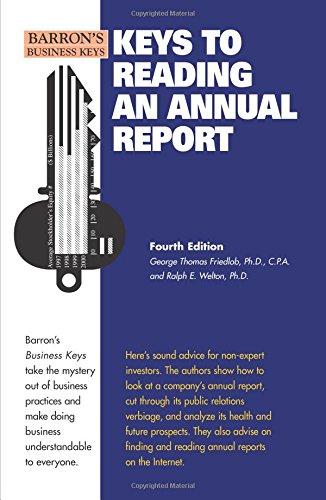Answered step by step
Verified Expert Solution
Question
1 Approved Answer
1. Net Asset Value. Last year you bought shares in the Diamond Mutual Fund, which has total assets of $100,000,000, liabilities of $5,000,000, and $7,500,000



 1. Net Asset Value. Last year you bought shares in the Diamond Mutual Fund, which has total assets of $100,000,000, liabilities of $5,000,000, and $7,500,000 shares outstanding. (a) What is the net asset value? (b) If the current price is $10, is this a good deal? 2. Back-end Load. You bought $3,500 worth of mutual funds with a back-end load of 3% if you sell within the first year. It decreases 1% a year afterward. (a) If you sell during the fifth year, how much will be the back-end load? (b) Did you make a good decision buying such a mutual fund? A year ago you invested $3,000 by buying 300 shares of the Canon Ball Mutual Fund, You reinvested the dividends, so you now has 350 shares. So far, the NAV you're your investment has risen from $10 per share to $12.00. (a) What is the percentage increase in the NAV of your mutual fund? (b) If you redeemed the first 100 shares of your mutual fund investment for $12 per share, what would be his capital gain over the amount invested? (c) Assuming your income taxes are at the 15 percent rate, how much income tax will you have to pay if you sell those first 100 shares? Two years ago, you invested $10,000 by buying 250 shares ( $28 per share NAV) in the Canon Ball Mutual Fund, an aggressive growth no-load mutual fund. Last year, you made two additional investments of $1,800 each (60 shares at $30 and 72 shares at \$25). You reinvested all of your dividends. So far, the NAV for your investment has risen from $28 per share to $35. Late in the year, you sold 75 shares at $35. (a) What were the proceeds from your sale of the 75 shares? (b) Investors can use the Internal Revenue Service's "average-cost basis method" to determine the average price paid for one share. Begin by calculating the average price paid for the shares. In this instance, the $13,600(10,000+1,800+1,800) is divided by 382 shares ( 250 shares +60 shares +72 shares). What was the average price paid? (c) To finally determine the average-cost basis of shares sold, you multiply the average price per share times the number of shares sold-in this case, 75. What is the total cost basis for your 75 shares? (d) Assuming that you have to pay income taxes on the difference between the sales price for the 75 shares and their cost, how much is this difference
1. Net Asset Value. Last year you bought shares in the Diamond Mutual Fund, which has total assets of $100,000,000, liabilities of $5,000,000, and $7,500,000 shares outstanding. (a) What is the net asset value? (b) If the current price is $10, is this a good deal? 2. Back-end Load. You bought $3,500 worth of mutual funds with a back-end load of 3% if you sell within the first year. It decreases 1% a year afterward. (a) If you sell during the fifth year, how much will be the back-end load? (b) Did you make a good decision buying such a mutual fund? A year ago you invested $3,000 by buying 300 shares of the Canon Ball Mutual Fund, You reinvested the dividends, so you now has 350 shares. So far, the NAV you're your investment has risen from $10 per share to $12.00. (a) What is the percentage increase in the NAV of your mutual fund? (b) If you redeemed the first 100 shares of your mutual fund investment for $12 per share, what would be his capital gain over the amount invested? (c) Assuming your income taxes are at the 15 percent rate, how much income tax will you have to pay if you sell those first 100 shares? Two years ago, you invested $10,000 by buying 250 shares ( $28 per share NAV) in the Canon Ball Mutual Fund, an aggressive growth no-load mutual fund. Last year, you made two additional investments of $1,800 each (60 shares at $30 and 72 shares at \$25). You reinvested all of your dividends. So far, the NAV for your investment has risen from $28 per share to $35. Late in the year, you sold 75 shares at $35. (a) What were the proceeds from your sale of the 75 shares? (b) Investors can use the Internal Revenue Service's "average-cost basis method" to determine the average price paid for one share. Begin by calculating the average price paid for the shares. In this instance, the $13,600(10,000+1,800+1,800) is divided by 382 shares ( 250 shares +60 shares +72 shares). What was the average price paid? (c) To finally determine the average-cost basis of shares sold, you multiply the average price per share times the number of shares sold-in this case, 75. What is the total cost basis for your 75 shares? (d) Assuming that you have to pay income taxes on the difference between the sales price for the 75 shares and their cost, how much is this difference




Step by Step Solution
There are 3 Steps involved in it
Step: 1

Get Instant Access to Expert-Tailored Solutions
See step-by-step solutions with expert insights and AI powered tools for academic success
Step: 2

Step: 3

Ace Your Homework with AI
Get the answers you need in no time with our AI-driven, step-by-step assistance
Get Started


